The DCI’s CIF-PM: A Training Centre of Excellence for underwater and special operations
hBy Luca Peruzzi
During a two-days (‘Training Days’) presentation event held on 23-24 May at Saint-Mandrier near Toulon in Southern France, the Dèfense Conseil International’s (DCI) NAVFCO naval arm presented the latest capabilities of its Military Diver Training (CIF-PM) Centre of Excellence to current and potential foreign operators. The Centre has recently extended its training courses portfolio on military diving, deep-sea interventions and mine warfare operations with the support of French partner companies, contributing with innovative equipment.
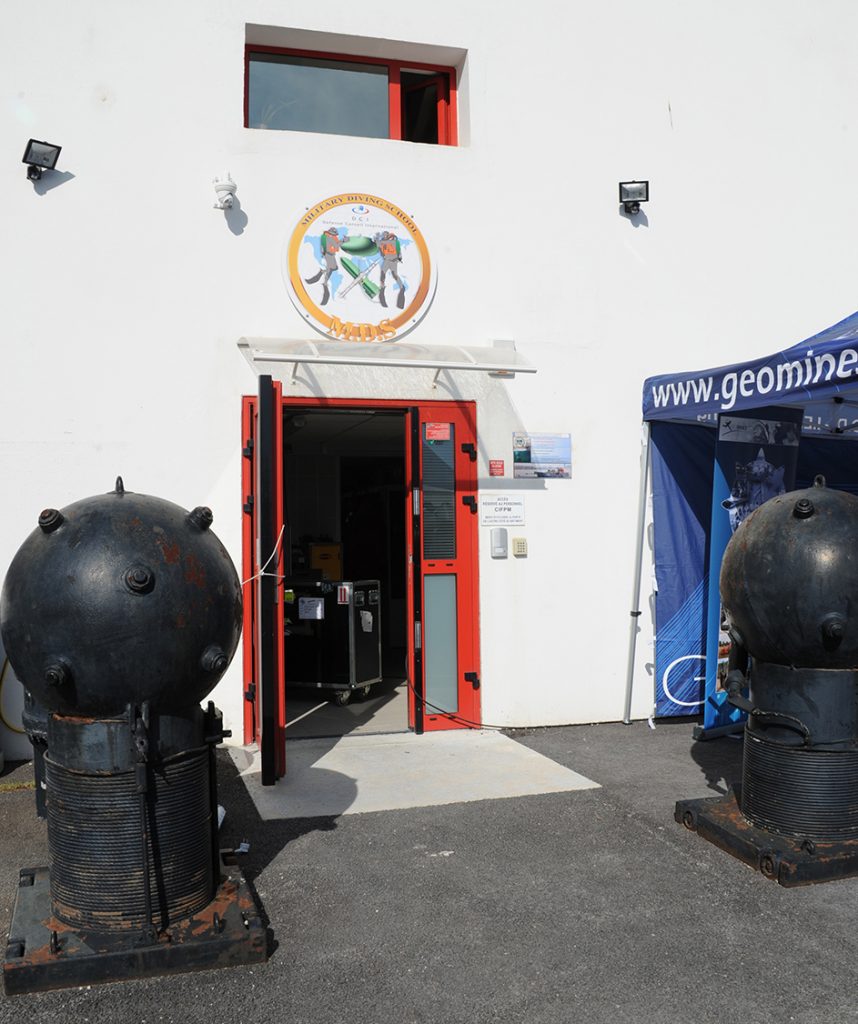
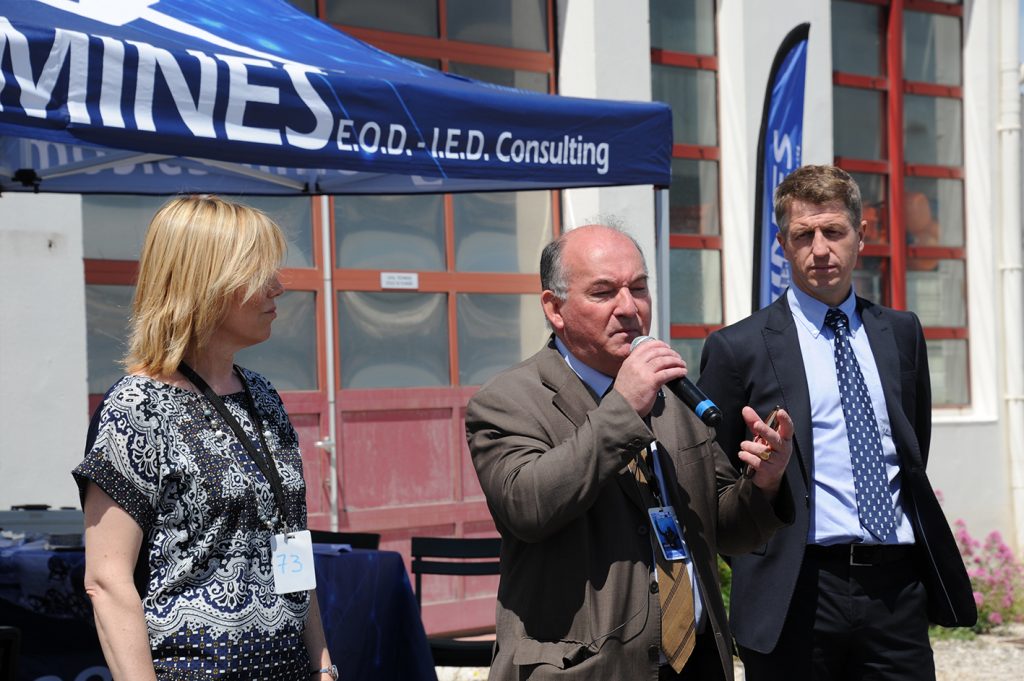
The two-days (‘Training Days’) presentation of DCI NAVFCO’s Centre International de Formation à la Plongée Militaire (CIF-PM), held at its facilities in Saint-Mandrier near Toulon in Southern France on 23-24 May, provided both current and potential invited foreign operators with an in-depth overview of its operational expertise and extended training course portfolio in military diving, deep-sea interventions, mine warfare, special forces and maritime security operations.
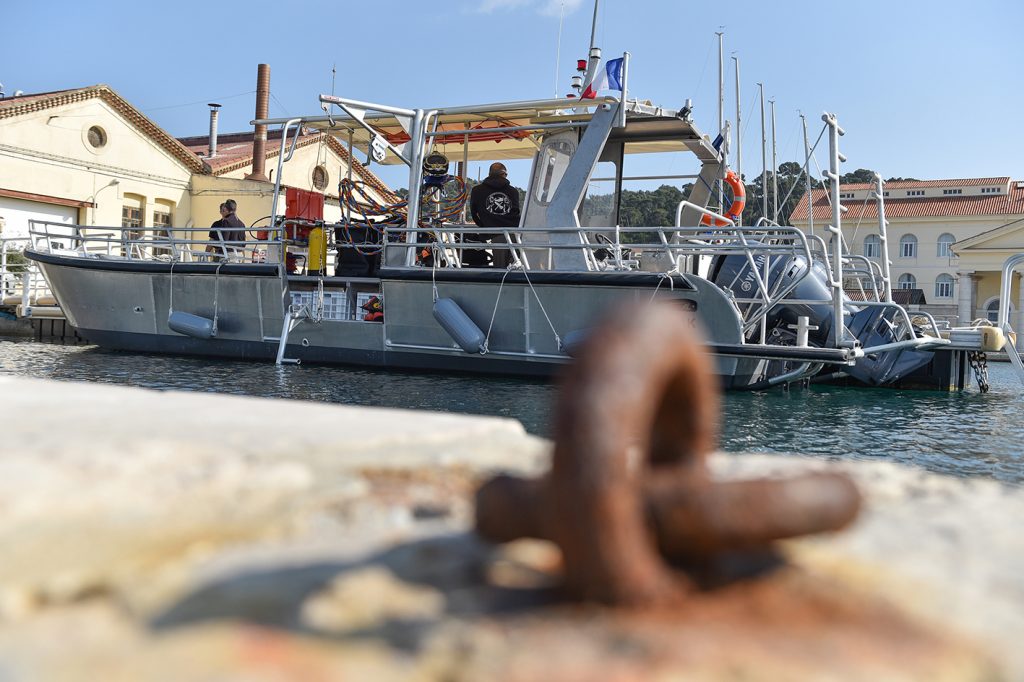
With more than 100 customer countries and eight permanent offices abroad, the Defensé Conseil International (DCI) is a service provider group with the French State as reference shareholder, just under 1,000 employees and reported sales of EUR227.5 million in 2015, which represents 35% growth over the past five years. As for the other arms of DCI, the primary mission of DCI’s naval component or NAVFCO is to transfer the know-how of the French Navy to the Foreign Naval Forces that are friendly with France, said Bruno Nielly, director of DCI-NAVFCO. DCI staff comprises experts and naval personnel who are either in service or have recently left active service and possess a broad range of competencies supplemented among 30 friendly nations. These teams can step in at any stage of a naval program from the equipment sale through to the supply of specific operational training. Their competencies cover the following areas: academic training, surface ships, submarines, naval aviation and activities related to maritime security, diving, special forces and mine warfare, added NAVFCO director.
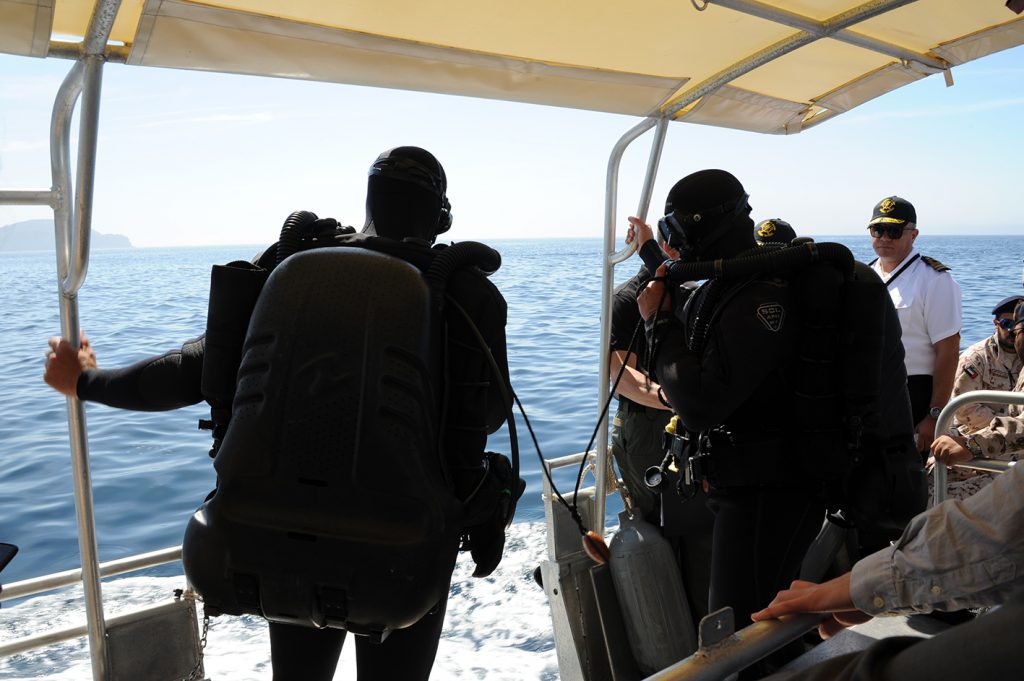

DCI-NAVFCO’s maritime security department, from which the CIF-PM depends, delivers specialised operational training in military diving, Special Forces, maritime safety and mine warfare. Training leads to the qualifications necessary to perform surveillance and protection missions. Training combines theory and practice and covers a broad spectrum of competencies and levels, from the initial operational approach to the most advanced specializations, explained Christian Segot, head of the maritime security department.
Located on the Saint-Mandrier peninsula, located right next to the French Navy diving academy with which it works in close cooperation and across the water from Toulon and its naval base, the CIF-PM training center covers the four fields of activities of DCI’s maritime security department: military diving, special forces, mine warfare and maritime security. Training courses cater primarily for officers and/or non-commissioned officers and/or soldiers/sailors of foreign countries. It complies with the regulations of the Ministry of Defence (French Navy) and the Ministry of Employment and its activities are relying on the agreements with the French armed forces for the use of firing ranges and on diving procedures and regulations currently in force in the French Navy.
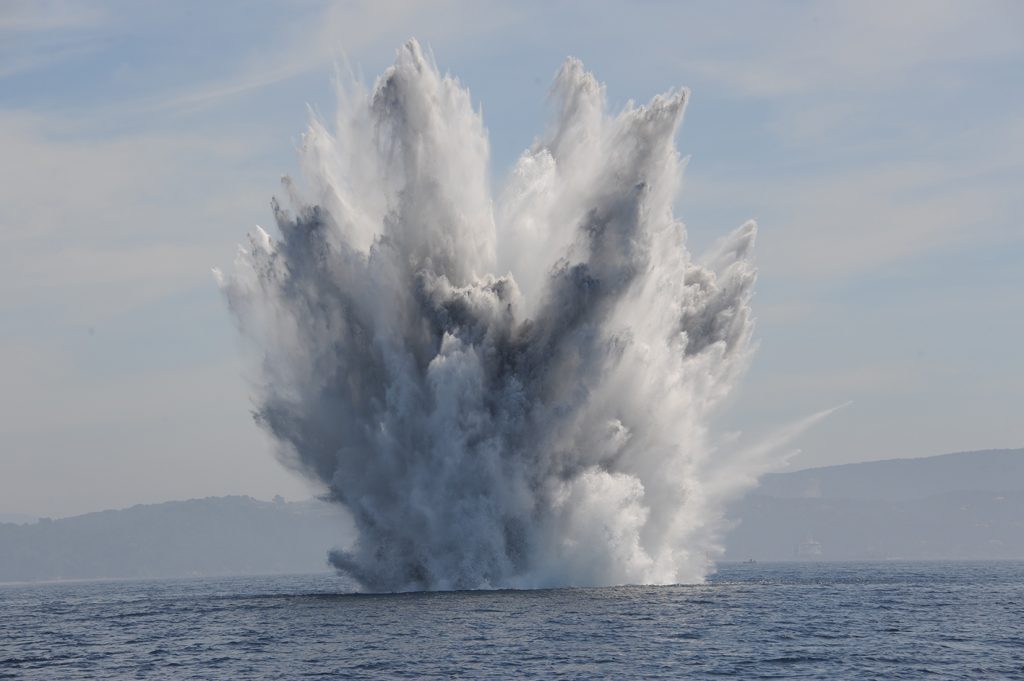
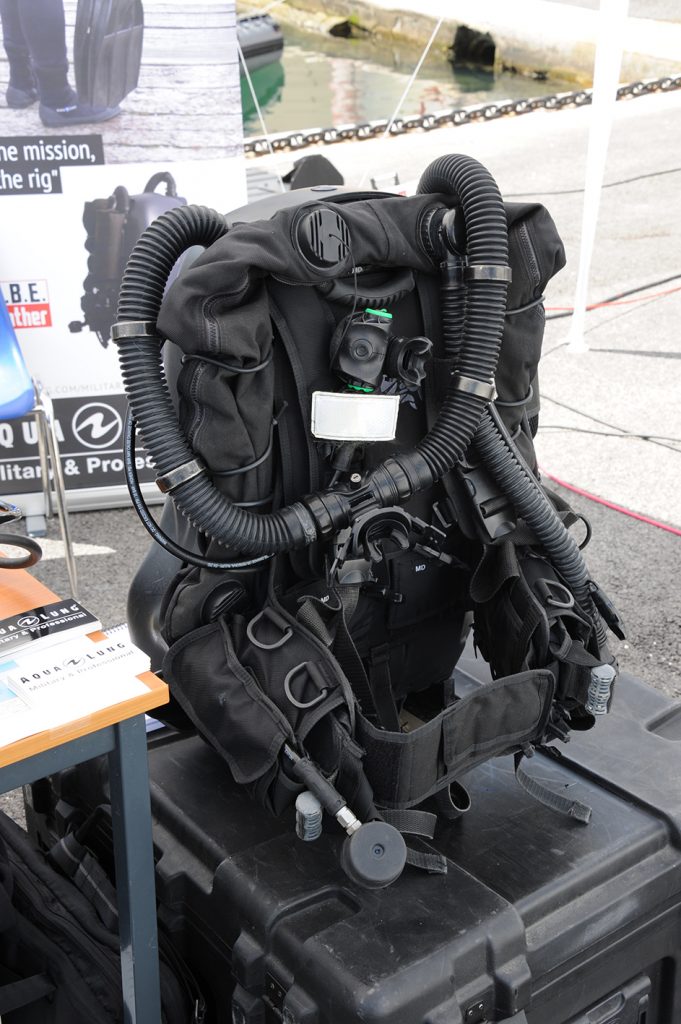
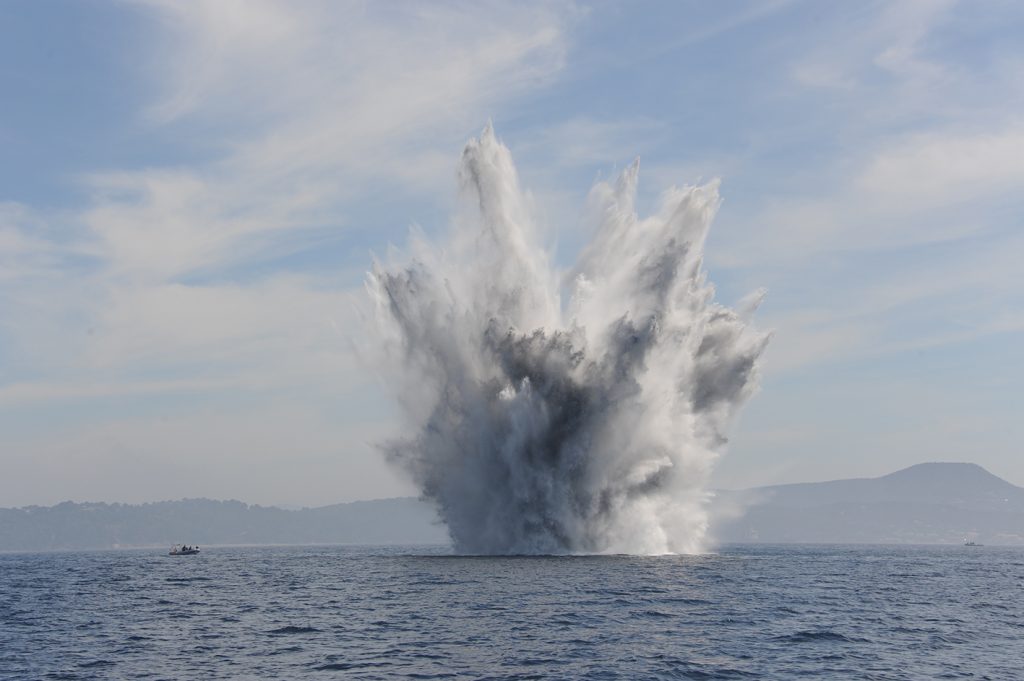
The proposed training courses at the CIF-PM focus in particular on the use of diving equipment designed for operations to depths of 80 meters for military activities or underwater interventions. They also cover the use of specific equipment (surface and underwater drones, hyperbaric chamber, mine-clearing robots) and the performance of real mine-clearing operations on land and underwater involving conventional or improvised munitions, said Christian Segot.
Primarily intended for fleet divers, rescue swimmers, mine-clearance and Special Forces divers, in addition to diving using air and gas mixtures, hyperbaric chamber handling and maintenance of nautical engines and rafts, the CIF-PM offers training courses for the neutralization and disposal of munitions and improvised explosive devices, welding, submarine escape trunk and ventilation of submarine in distress.
The CIF-PM is today managed by a core team of nine persons including six instructors, one supervisor and responsible for the facility, one translator and one assistance, but in the past, the centre reached an instructor force of 20 units to handle simultaneously three different courses with 25 trainees. The instructors are former French Navy mine-clearing or combat divers and use all the equipment in service with French Navy. A seniority of at least 17 years in the French Navy is required. Instructors holding a hyperbaric fitness certificate (CAH – class 2 – stipulation B at least) also work in the centre. In the first quarter of 2016, the CIF-PM has further expanded its training and support capabilities with the entry into service of a 10-meters fast training support boat called Mirak, which can accommodate up to 21 divers. The latter is fitted with gallows enabling submarine works with divers or use of submarine robots such as ROV (Remotely Operated Vehicle) or AUV (Autonomous Underwater Vehicle).
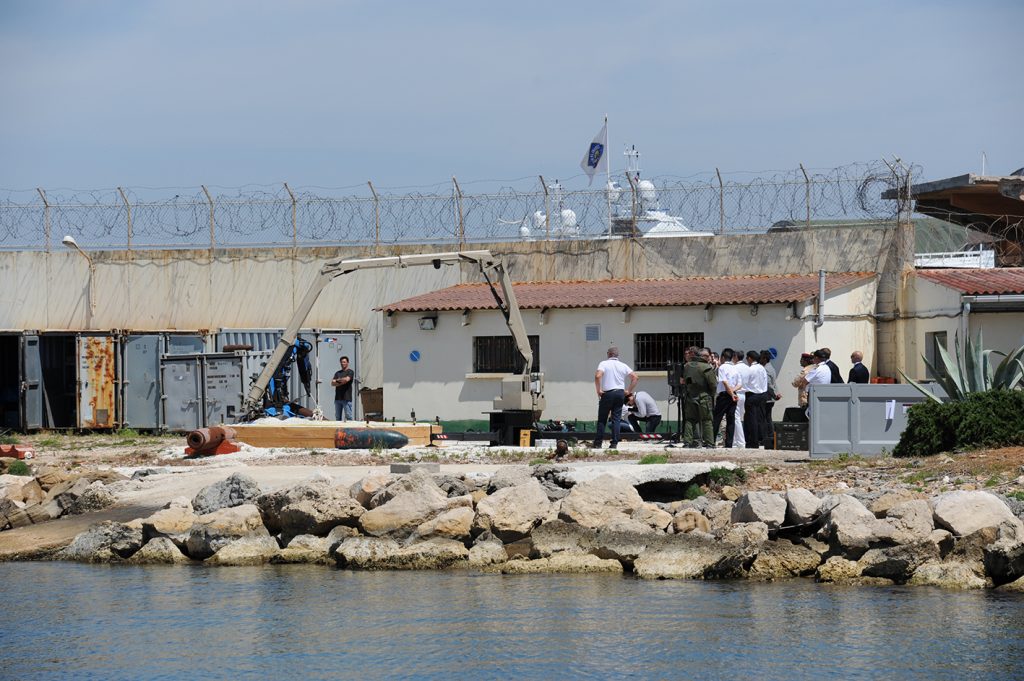

Since its creation in 2003, more than 400 foreign trainees from Kuwait, Qatar, Libya, Slovenia and Malaysia, have been trained in military and professional diving and deep-sea interventions at the CIF-PM, and looking to the interest showed by the invited foreign military delegations during the two-days presentation event, among which were Middle East and Northern Africa operators, more are expected to become customers of the Centre.
The later has recently extended its offering in the mine warfare sector by proposing training associated with modern, innovative systems that can be deployed from a dedicated ship or remotely operated such as surface and underwater drones, towed sonar, data processing systems and simulators. To support these and others new training activities such as Special Forces and the new equipment in service with the French Armed Forces and offered or acquired by international customers, the DCI has established partnerships with French companies including Aqua Lung, ECA group, RTsys, Alseamar, TR Equipment Geo Mines and Subsea Tech, which were present at the two-day presentation event, providing workshops and live demonstration in connection with CIF-PM activities.
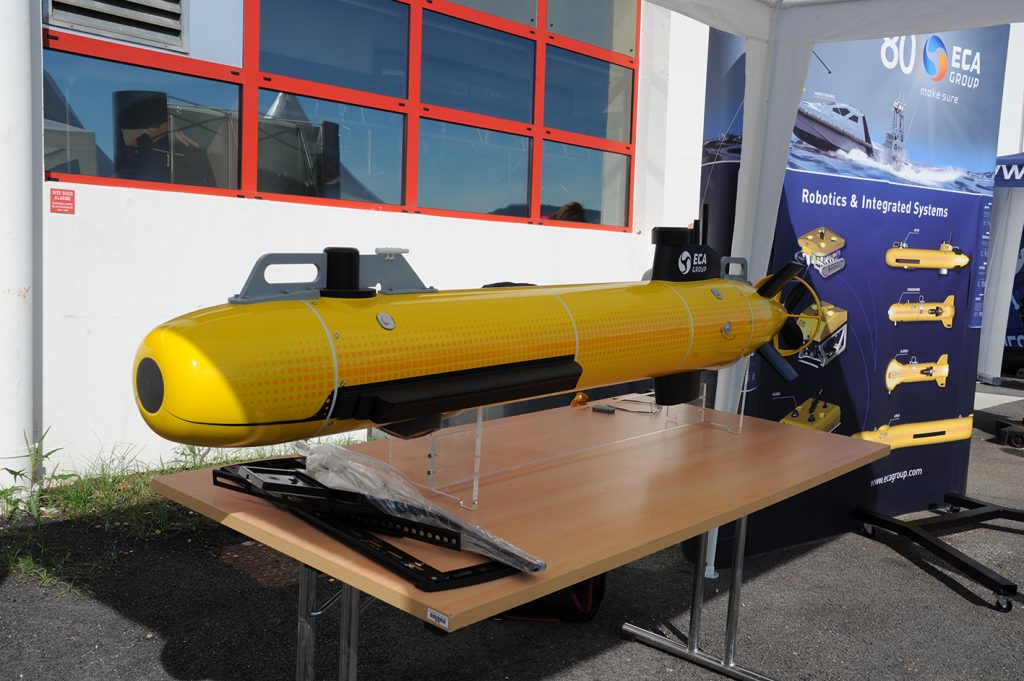
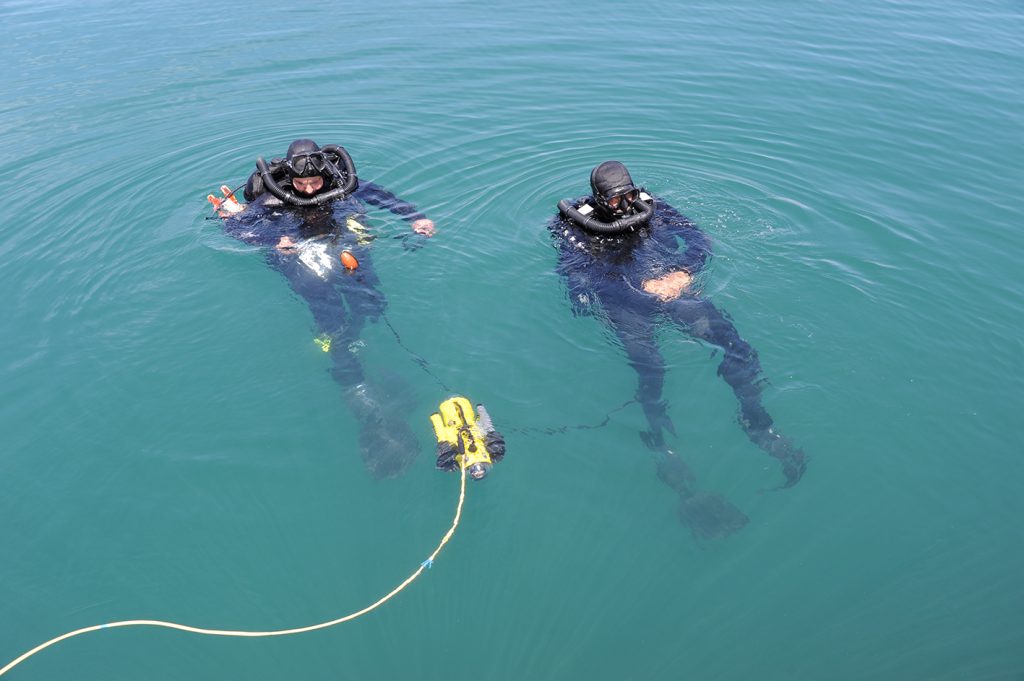
During the first day of DCI’s presentation, to which EDR participated, teams of operators were embarked on Mirak training support boat to assist to the neutralisation of a well-known munition, represented by a NATO standard Mk 82 air-launched bomb, in the bay of Toulon. After establishing a secure perimeter including both police and CIF-PM boats to guard the exercise area, a two-divers team from the Centre with standard-used Aqua Lung CRABE rebreather was launched by Mirak support boat to simulate a training event with the identification, handling and preparation of the underwater neutralisation of the munition. The later was fired being suspended at a depth of 12 meters on a sea bottom of 60-meters to comply with environmental protection directive. During the presentation day, the invited operators, authorities and press could assist to other training events including land EOD and IED, underwater inspection with ROV and work in the compound and nearby facilities of the CIF-PM.
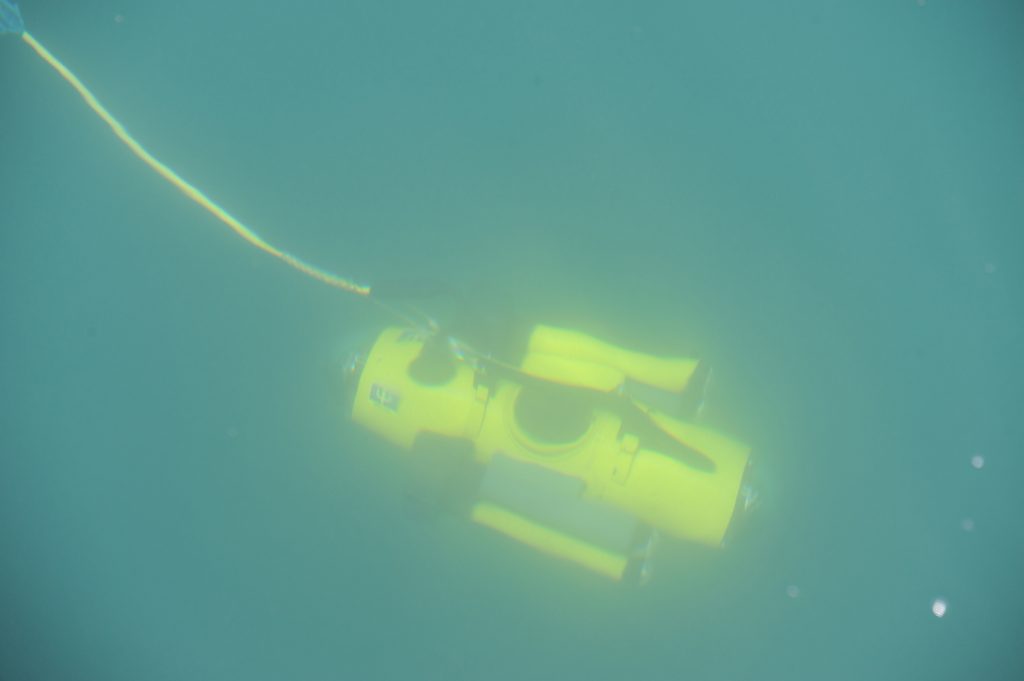
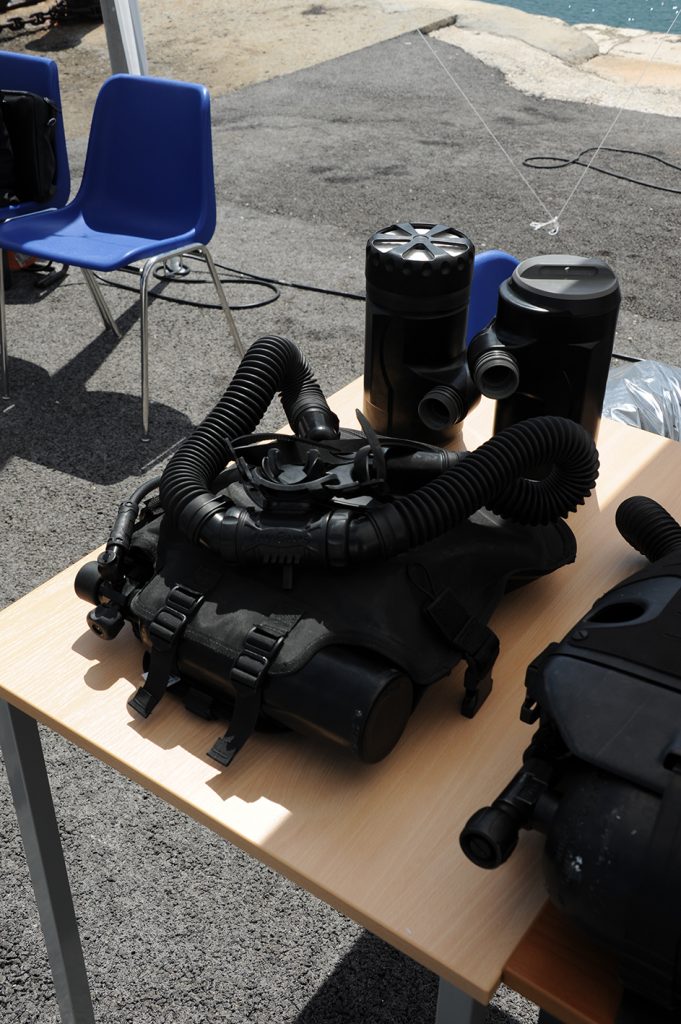
Among the companies showing their equipment, Aqua Lung was presenting the complete range of its worldwide known rebreathers, including the capabilities of its CRABE (Complete Range Autonomous Breathing Equipment) semi-close circuit rebreather which uses oxygen/nitrogen and tri-mix to depths of 80 meters. Meeting US and NATO magnetic and acoustic standards for MCM/EDO diving, the CRABE is the standard diving equipment used at the CIF-PM. Among other products, Aqua Lung was presenting the Amphora rebreather based on the FROGS platform. The equipment is a closed-circuit apparatus in the oxygen dive configuration and a constant mass flow apparatus in the mixed gas dive configuration. The AMPHORA rebreather uses oxygen/nitrogen mixtures in semi-closed circuit configuration to a maximum depth of 30 meters. Also shown was the MODE product, which is the smallest of the Aqua Lung oxygen rebreathers and is specifically designed for clandestine use.
The ECA Group was presenting the full range of ROV, AUV and USV, including the A9-M man-portable AUV dedicated to military applications which were displayed in the real system. This AUV has been designed to meet STANAG 1364 requirements, with reduced acoustic and magnetic signatures in order not to trigger any underwater mines when doing the mine warfare survey. Its main function is mine like objects detection and even classification depending, in particular, on environmental conditions and seabed type. The EAC Group is expected to acquire new customers for its underwater unmanned equipment family in 2017, almost doubling its customer portfolio.
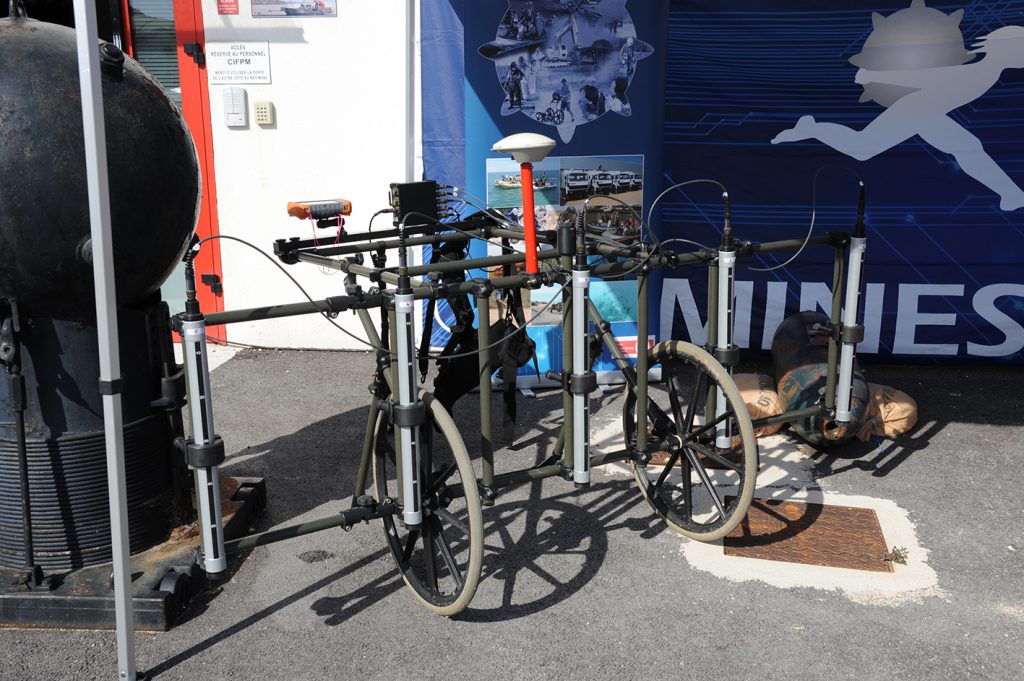
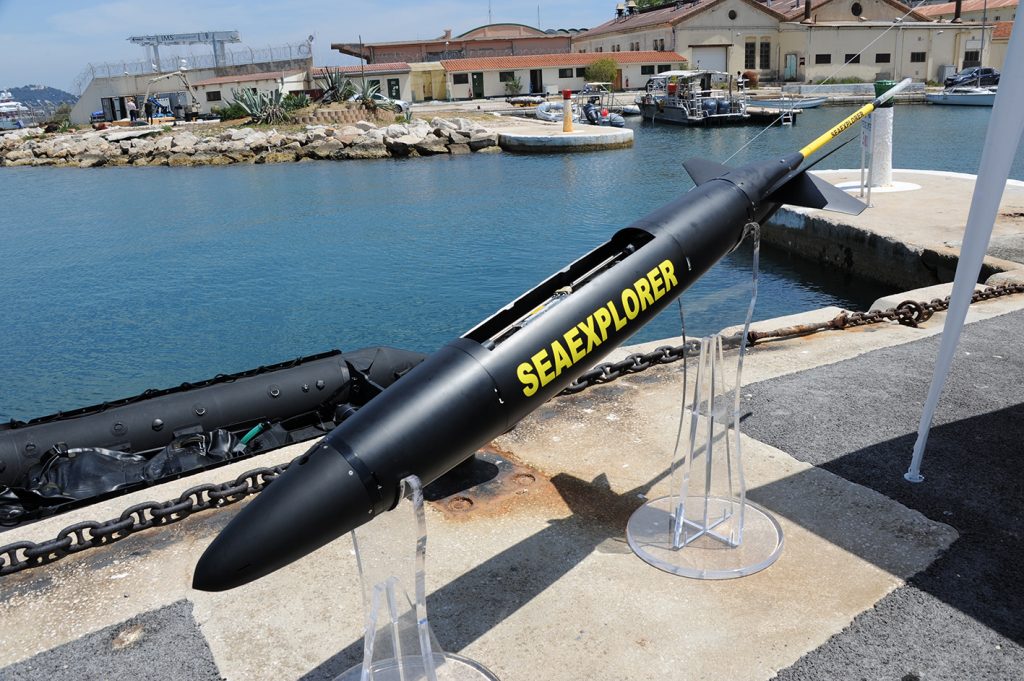
The Alseamar company specialised in underwater equipment for oceanography and science, oil & gas and defence & security, was presenting its Sea Explorer underwater glider, being one of the few manufacturer of such product worldwide. With a battery endurance of up to two months (depending on sensor configuration), the Sea Explorer is a powerful autonomous sensing platform dedicated to collecting water column data profiles with very large spatiotemporal coverage (thousands of km and weeks to months of endurance). Alseamar was also showing its family of Detectors for applications including the underwater locator beacon, NATO helicopter pingers and submarine distress signal detection and location as well as drug enforcement with underwater drugs canisters detection and localisation.
With a wide range of customers including Total, Saipem, French MoD, DCNS and Italian MoD, the Subsea Tech engineering company based in Marseille and specialised in the design and fabrication of underwater observation, investigation and instrumentation systems, presented its family of Mini-ROV and 1.8-3 meters tele-operated and unmanned catamarans. The very agile and easy to operate Mini-ROV Observer demonstrated its capabilities in support of the CIF-PM divers in the water in front of the Centre.

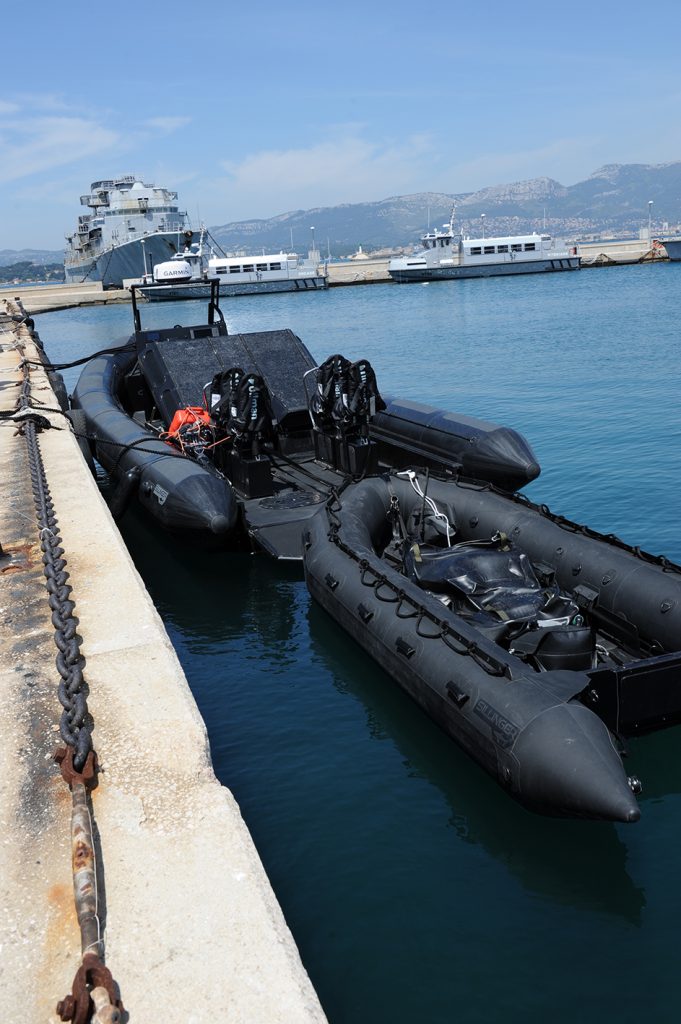
TR-Equipment was present with a range of equipment for special forces and maritime security operations, ranging from missions customised vests and equipment to 40mm grenade launcher and sniper rifles, while RTSys company gave an interesting presentation of its SONADIVE’s sonar and navigation system which assists divers during recognition or objects detection missions. The portable systems for divers have an embedded navigation system relying on several sensors and have the possibility to send a message and to share contacts via UW modems. The SONADIVE can be equipped with multi-beam sonar acoustic cameras for respectively detection, identification and classification purposes.
A Risk&Co group company, Geomines was presenting its integrated mine / ERW clearance solutions enabling governments, organisations and private customers to ensure projects are delivered in an efficient and timely manner, whilst ensuring the highest ethical standards and principles are maintained
